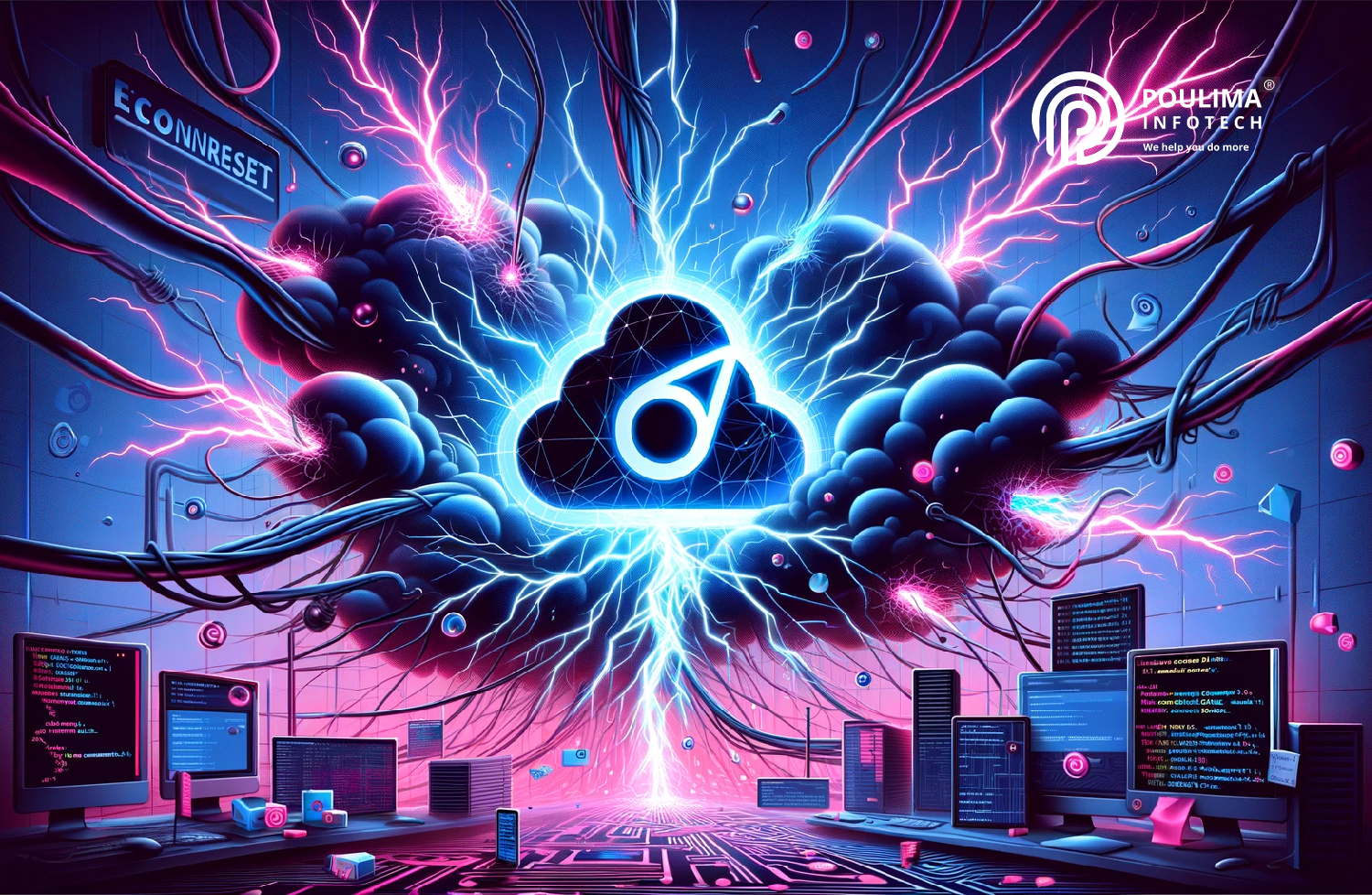Navigating "NodeJS Error: ECONNRESET, Connection Reset by Peer"
Introduction
In the landscape of Node.js applications, particularly those dealing with network operations, developers might encounter the “ECONNRESET, Connection reset by peer” error. This error signifies that a TCP connection was abruptly closed by the remote server or client, disrupting ongoing data transmission. Understanding the nuances of this error is crucial for developers working with APIs, external services, or any network-related tasks in Node.js. This blog aims to shed light on the “ECONNRESET” error, providing insights into its causes, common scenarios, and effective solutions.
Understanding the Error
The “ECONNRESET, Connection reset by peer” error in Node.js is a network error that occurs at the TCP level. It happens when one side of a connection sends a TCP RST (reset) packet to the other side, indicating an immediate closure of the connection. This can be due to various reasons, including network issues, server crashes, or client disconnects.
Diving Deeper
To effectively address this error, it’s important to understand the context in which your Node.js application operates, including the stability of network connections and the behavior of external services. Let’s explore some common scenarios where this error might occur and discuss potential solutions.
Common Scenarios and Fixes with Example Code Snippets
Scenario 1: HTTP Request to an Unstable Server
Problematic Code:
Javascript:
const http = require('http');
http.get('http://unstable-server.com', (res) => {
// Handle response
}).on('error', (e) => {
console.error(`Got error: ${e.message}`); // ECONNRESET might occur here
});
Explanation: The request might fail if the server resets the connection unexpectedly.
Solution:
Javascript:
http.get('http://unstable-server.com', (res) => {
// Handle response
}).on('error', (e) => {
if (e.code === 'ECONNRESET') {
console.error('Connection was reset by the server');
} else {
console.error(`Got error: ${e.message}`);
}
});
Explanation: Adding specific error handling for ECONNRESET helps in taking appropriate actions, like retrying the request.
Scenario 2: TCP Socket Connection to a Remote Service
Problematic Code:
Javascript:
const net = require('net');
const client = new net.Socket();
client.connect(1337, 'remote-service.com', () => {
console.log('Connected');
client.write('Hello');
});
client.on('error', (error) => {
console.error('Connection error:', error); // ECONNRESET might be logged here
});
Explanation: The connection might be reset by the remote service, leading to an error.
Solution:
Javascript:
client.on('error', (error) => {
if (error.code === 'ECONNRESET') {
// Implement reconnect logic or other error recovery
console.error('Connection reset by peer. Attempting to reconnect...');
client.connect(1337, 'remote-service.com');
} else {
console.error('Connection error:', error);
}
});
Explanation: Implementing a reconnection strategy or other error recovery mechanisms can help maintain the application’s resilience.
Scenario 3: Handling Large Payloads in WebSockets
Problematic Code:
Javascript:
const WebSocket = require('ws');
const ws = new WebSocket('ws://example.com/');
ws.on('message', function incoming(data) {
// Process incoming data
});
ws.on('error', function error(e) {
console.error('WebSocket error:', e); // ECONNRESET can occur with large payloads
});
Explanation: Large payloads or high traffic might cause the server to reset the connection.
Solution:
Javascript:
ws.on('error', function error(e) {
if (e.code === 'ECONNRESET') {
console.error('WebSocket connection reset. Adjusting payload size...');
// Adjust payload size or rate of data transfer
} else {
console.error('WebSocket error:', e);
}
});
Explanation: Optimizing payload size or the rate of data transfer can prevent the server from resetting the connection.
Scenario 4: Persistent Connections to Databases
Problematic Code:
Javascript:
const mongoose = require('mongoose');
mongoose.connect('mongodb://localhost/mydatabase', { useNewUrlParser: true });
mongoose.connection.on('error', (err) => {
console.error('Database connection error:', err); // ECONNRESET might occur here
});
Explanation: Network issues or database server restarts can cause the connection to be reset.
Solution:
Javascript:
mongoose.connection.on('error', (err) => {
if (err.code === 'ECONNRESET') {
console.error('Database connection reset. Reconnecting...');
mongoose.connect('mongodb://localhost/mydatabase', { useNewUrlParser: true });
} else {
console.error('Database connection error:', err);
}
});
Explanation: Re-establishing the database connection upon a reset can ensure the application’s continuous access to the database.
Scenario 5: API Integration with External Services
Problematic Code:
Javascript:
const axios = require('axios');
axios.get('https://external-service.com/data')
.then(response => console.log(response.data))
.catch(error => console.error('API call error:', error));
Explanation: API calls to external services might fail due to connection resets, especially under heavy load or network instability.
Solution:
Javascript:
axios.get('https://external-service.com/data')
.then(response => console.log(response.data))
.catch(error => {
if (error.code === 'ECONNRESET') {
console.error('API connection was reset. Retrying...');
// Implement retry logic
} else {
console.error('API call error:', error);
}
});
Explanation: Implementing a retry mechanism for API calls can help recover from transient network issues.
Scenario 6: Communication Between Microservices
Problematic Code:
Javascript:
const fetch = require('node-fetch');
fetch('http://microservice-b/internal-endpoint')
.then(res => res.json())
.catch(err => console.error('Microservice communication error:', err));
Explanation: Inter-service communication can be interrupted by connection resets, particularly in a microservices architecture where numerous network calls are made.
Solution:
Javascript:
function fetchDataWithRetry(url, retries = 3) {
fetch(url)
.then(res => res.json())
.catch(err => {
if (err.code === 'ECONNRESET' && retries > 0) {
console.log('Retrying microservice call...');
fetchDataWithRetry(url, retries - 1);
} else {
console.error('Microservice communication error:', err);
}
});
}
fetchDataWithRetry('http://microservice-b/internal-endpoint');
Explanation: A recursive retry function can mitigate temporary network failures, ensuring reliable inter-service communication.
Scenario 7: Streaming Data Over Unstable Connections
Problematic Code:
Javascript:
const { Readable } = require('stream');
const myDataStream = new Readable();
myDataStream._read = () => {}; // Dummy _read function
myDataStream.push('my data');
myDataStream.push(null);
myDataStream.pipe(process.stdout).on('error', (err) => {
console.error('Stream error:', err);
});
Explanation: Streaming data over networks can be susceptible to ECONNRESET errors if the connection is unstable or drops.
Solution:
Javascript:
myDataStream.pipe(process.stdout).on('error', (err) => {
if (err.code === 'ECONNRESET') {
console.log('Connection reset during streaming. Implementing recovery logic...');
// Implement logic to resume or restart the stream
} else {
console.error('Stream error:', err);
}
});
Explanation: Implementing error handling in data streams allows for the application to recover from connection resets, potentially by resuming or restarting the stream.
Scenario 8: Handling Long-Running Connections in Real-Time Applications
Problematic Code:
Javascript:
const WebSocket = require('ws');
const ws = new WebSocket('wss://real-time-service.com');
ws.on('message', function incoming(data) {
console.log(data);
});
ws.on('close', function close() {
console.error('Connection closed unexpectedly');
});
Explanation: Real-time applications using WebSockets might experience ECONNRESET errors if the connection is abruptly closed by the server or due to network issues.
Solution:
Javascript:
ws.on('close', function close(code, reason) {
if (code === 1006) { // Abnormal closure, which might indicate a connection reset
console.error('WebSocket connection reset. Attempting to reconnect...');
// Reconnect logic here
} else {
console.error(`Connection closed (${code}): ${reason}`);
}
});
Explanation: Handling the ‘close’ event in WebSocket connections allows the application to detect abnormal closures (such as those caused by ECONNRESET) and implement reconnection logic, ensuring the continuity of real-time data flow.
Strategies to Prevent Errors
Robust Error Handling: Implement comprehensive error handling for all network operations.
Connection Monitoring: Regularly monitor the health and stability of network connections.
Retry Mechanisms: Develop retry logic for transient network errors to enhance resilience.
Timeout Adjustments: Configure appropriate timeout settings to avoid premature connection resets.
Best Practices
Graceful Recovery: Design your application to gracefully recover from network disruptions.
Logging and Alerts: Maintain detailed logs for network errors and set up alerts for abnormal patterns.
Load Testing: Conduct load testing to identify potential bottlenecks and stress points.
External Service Monitoring: Monitor the health of external services and be prepared for their downtime or inconsistencies.
Conclusion
The “ECONNRESET, Connection reset by peer” error in Node.js, while disruptive, can be effectively managed with proactive error handling and recovery strategies. By understanding the underlying network dynamics and implementing best practices, developers can build more resilient and fault-tolerant Node.js applications. Remember, in the world of networked applications, preparation and responsiveness to errors like “ECONNRESET” are key to maintaining seamless operations and a positive user experience.



